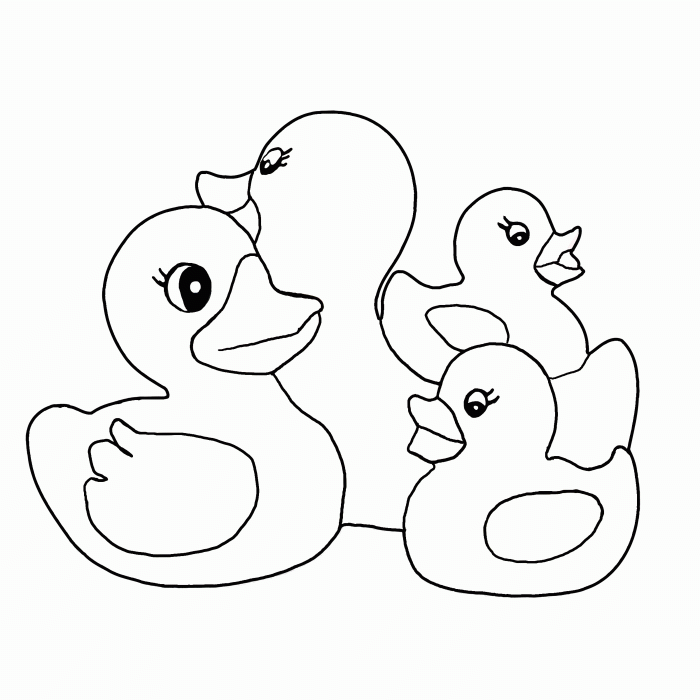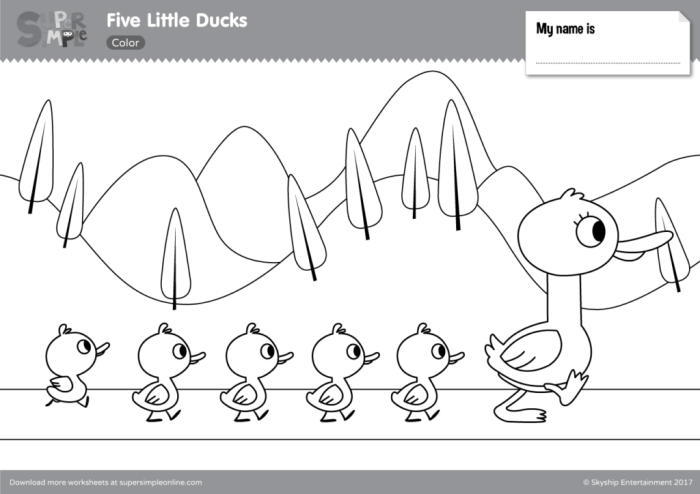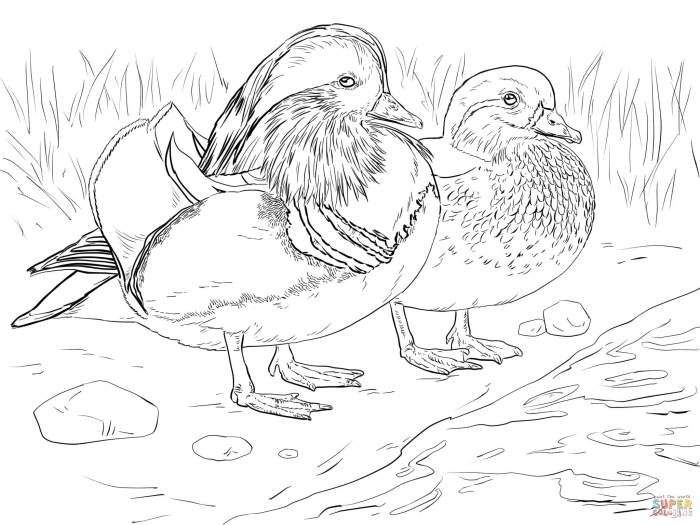Thematic Exploration of “Ducks Coloring Pages Lucifer”

Ducks coloring pages lucifer – The juxtaposition of innocent ducks and the fallen angel Lucifer presents a unique and potentially compelling theme for coloring pages. This unexpected pairing allows for a wide range of interpretations and artistic approaches, catering to diverse age groups and artistic sensibilities. The inherent contrast between the lighthearted imagery of ducks and the darker connotations of Lucifer offers a fertile ground for creative exploration.The combination of ducks and Lucifer can be interpreted in several ways depending on the age and understanding of the viewer.
For younger children, the focus might be on the playful aspect of coloring ducks, with Lucifer perhaps represented in a less menacing, more cartoonish style. Older children and teenagers might appreciate the irony and the opportunity to explore themes of good versus evil, innocence versus corruption, or even the complexities of religious mythology. The duality of the theme allows for a richer, more nuanced experience than a simple duck coloring page.
Artistic Styles for “Ducks Coloring Pages Lucifer”
Several artistic styles could effectively represent the “Ducks and Lucifer” theme. A cartoonish style could soften the darker aspects of Lucifer, making the coloring pages suitable for younger audiences. This approach might depict Lucifer with exaggerated features, bright colors, and a less intimidating demeanor. Conversely, a more realistic or even gothic style could emphasize the darker, more sinister aspects of Lucifer, creating a more complex and potentially unsettling image for older audiences.
A realistic style might focus on detailed rendering of both the ducks and Lucifer, highlighting the contrast between their natural beauty and Lucifer’s potentially demonic features. A gothic style might incorporate dark colors, intricate details, and a sense of foreboding to create a visually striking and thematically appropriate image.
Artistic Approach Comparison
| Style | Target Audience | Color Palette | Overall Mood |
|---|---|---|---|
| Cartoonish | Young Children (3-7) | Bright, primary colors; pastel shades | Playful, lighthearted |
| Realistic | Older Children (8-12), Teens | Naturalistic colors; muted tones; some dark accents | Intriguing, thought-provoking |
| Gothic | Teens, Adults | Dark, muted colors; deep reds, purples, blacks | Mysterious, unsettling, dramatic |
| Surreal | Teens, Adults | Vivid, unexpected color combinations | Dreamlike, bizarre, captivating |
Analyzing the Target Audience

The seemingly paradoxical combination of “ducks” and “Lucifer” in coloring pages presents a unique challenge in identifying the target audience and understanding the potential psychological impact. The inherent cuteness of ducks clashes with the connotations of Lucifer, a figure associated with darkness and evil, creating a complex appeal that varies significantly across age groups.The appeal of such a theme hinges on the interplay between the familiar and the unexpected, the cute and the slightly sinister.
This makes a straightforward age range determination difficult, and the psychological implications warrant careful consideration.
Age Range and Interests
The primary target audience is likely to be a niche group. While the imagery of ducks might initially attract younger children, the inclusion of “Lucifer” significantly narrows this demographic. Children aged 4-8 might be drawn to the duck illustrations, but the “Lucifer” element would likely be lost or misunderstood. Older children (9-12) might find the juxtaposition intriguing, possibly perceiving it as humorous or darkly whimsical.
However, even within this age group, the appeal would be highly variable depending on individual maturity levels and exposure to religious or mythological contexts. Adults, particularly those with an interest in dark humor, ironic art, or unconventional aesthetics, might find the concept appealing.
Psychological Implications for Children
Exposing young children to the “Lucifer” element alongside cute duck imagery raises some concerns. The potential for confusion and unintended messaging is significant. While the ducks might provide a sense of comfort and familiarity, the presence of “Lucifer” could introduce unsettling elements that children may not fully comprehend. This could lead to anxiety, nightmares, or a distorted understanding of good versus evil.
The subtle influence of such imagery requires careful consideration by parents and educators. For instance, a coloring page featuring a smiling duck with subtly demonic horns might be more concerning than one featuring a simple duck illustration. The overall design and execution would significantly influence the potential psychological impact.
Appeal to Adults vs. Children
The appeal to adults differs considerably from that of children. Adults might appreciate the irony and the subversive nature of the combination. They may find it humorous, thought-provoking, or even a commentary on the juxtaposition of light and darkness. The coloring pages could become a form of artistic expression, allowing adults to engage with the themes on a more intellectual level.
Children, on the other hand, are more likely to focus on the visual aspects of the ducks, potentially missing or misinterpreting the “Lucifer” element entirely. The subtle nuances and dark humor would likely be lost on younger audiences.
Catering to Different Age Groups through Design
To effectively target different age groups, the coloring page designs need to be carefully adapted. For younger children (4-7), the focus should be entirely on the cute and appealing aspects of the ducks. Illustrations could feature bright colors, simple designs, and playful backgrounds. The “Lucifer” element should be either absent or extremely subtle, perhaps a small, innocuous detail that wouldn’t cause alarm.
For older children (8-12), the design could incorporate a more sophisticated visual style, with slightly more complex illustrations and a more pronounced (but still age-appropriate) “Lucifer” theme. This might involve using darker colors, more detailed backgrounds, and perhaps subtle hints of the darker connotations without being overtly frightening. For adults, the design could be more abstract, incorporating darker themes and potentially incorporating stylistic choices reflecting the dark humor or ironic nature of the concept.
Color Palette and Design Considerations
Creating a compelling color palette for “Ducks Coloring Pages Lucifer” requires a delicate balance. We need to capture the inherent charm of ducks while subtly incorporating elements suggestive of Lucifer, avoiding anything overtly demonic or frightening, maintaining an age-appropriate design for the target audience. The overall aesthetic should be intriguing and visually engaging, encouraging creativity and imaginative coloring.The color choices should evoke a range of emotions and interpretations, hinting at the duality inherent in the theme.
A carefully chosen palette can create a sense of mystery, playfulness, or even a touch of mischievousness without being overtly dark or scary.
Color Palette Examples
A suitable palette could incorporate muted jewel tones alongside brighter, more playful colors. For example, deep emerald greens for the ducks’ feathers could be balanced with sunny yellows and oranges for accents, perhaps on their beaks or feet. Subtle hints of deep purples or burgundies could be used sparingly to add a touch of intrigue, representing the Luciferian aspect in a sophisticated, non-threatening manner.
These darker colors could be used in the background or in subtle shading, avoiding harsh contrasts that might be unsettling for children. Alternatively, a palette using earthy browns and greens for the ducks, complemented by shimmering golds and deep blues for the background, could suggest a mystical, almost fairytale-like atmosphere. The use of a single, accent color like a deep crimson could then add a touch of the unexpected and hint at the “Lucifer” element without being overly sinister.
Design Elements
The visual appeal and thematic consistency can be enhanced by incorporating various design elements. These elements should complement the chosen color palette and contribute to the overall mood and narrative.
Finding engaging coloring pages for kids can be a fun challenge. While you might be searching for “ducks coloring pages lucifer,” a completely different underwater world awaits with a vibrant coral reef coloring page , offering a fantastic alternative for creative exploration. Returning to our feathered friends, remember to consider the various artistic styles available when choosing your “ducks coloring pages lucifer”.
- Intricate Feather Details: Detailed feather patterns on the ducks can add a level of sophistication and encourage detailed coloring.
- Symbolic Backgrounds: Subtle background elements, such as stylized flames (representing Lucifer in a non-frightening way), or celestial patterns (stars, moons) can enhance the thematic depth without overwhelming the main focus.
- Playful Expressions: The ducks could have expressive faces, ranging from mischievous grins to thoughtful expressions, adding personality and engagement.
- Environmental Details: Including relevant environmental details, like stylized flowers, leaves, or water elements, can create a more complete and engaging scene.
- Geometric Patterns: Subtle geometric patterns within the ducks’ feathers or in the background can add visual interest and a touch of unexpected complexity.
Shading and Texture
Shading and texture are crucial for adding depth and complexity to the coloring pages. Subtle shading can create a three-dimensional effect, making the ducks appear more realistic and engaging. Different textures, such as rough feathers or smooth water, can be suggested through varying line weights and patterns, adding another layer of visual interest. For example, using a variety of line weights to depict different feather textures, from fluffy down to sleek, glossy feathers, can create a sense of realism.
Similarly, varying the density of shading can create the illusion of light reflecting off the duck’s feathers, adding to the overall depth and realism of the image. This will allow children to explore different coloring techniques and achieve a variety of visual effects.
Potential Interpretations and Symbolism

The seemingly incongruous pairing of ducks and Lucifer in coloring pages offers a rich ground for interpreting symbolic meaning. Both ducks and Lucifer hold diverse symbolic weight across different cultures and artistic traditions, and their juxtaposition invites exploration of contrasting ideas and potential ironic commentary. Understanding the individual symbolism of each element is crucial to grasping the multifaceted interpretations possible within this unusual theme.The symbolism of ducks varies across cultures.
In some, they represent domesticity and family life, reflecting their often-seen peaceful demeanor and parental care. In others, they can symbolize freedom and adaptability, due to their ability to migrate and thrive in diverse environments. Conversely, ducks have also been associated with deception or trickery in folklore, potentially linked to their elusive nature and ability to disappear quickly into water.Lucifer, on the other hand, is predominantly associated with rebellion, temptation, and the fall from grace.
His depictions in art and literature are varied, ranging from a majestic, fallen angel to a grotesque demon. The visual representations often reflect the prevailing moral and religious beliefs of the time and the artist’s individual interpretation. Sometimes Lucifer is portrayed as a tragic figure, a victim of circumstance or divine injustice, while in other representations, he is the embodiment of pure evil.The combination of ducks and Lucifer creates a compelling tension.
The innocent, often idyllic imagery of ducks contrasts sharply with the dark and complex symbolism of Lucifer. This juxtaposition can be interpreted in several ways, depending on the specific design and the viewer’s perspective. The contrast may highlight the unexpected nature of temptation, suggesting that even the most seemingly innocent things can harbor hidden darkness. Alternatively, it might be seen as a commentary on the duality of nature, the coexistence of good and evil, or the inherent contradictions within human experience.
Potential Interpretations of “Ducks Coloring Pages Lucifer”
The following points Artikel potential interpretations, encompassing both positive and negative connotations. These interpretations are not mutually exclusive; a single coloring page might resonate with multiple meanings simultaneously.
- Ironic juxtaposition: The innocence of ducks against the darkness of Lucifer creates a humorous or satirical effect, highlighting the absurdity of the combination.
- Exploration of duality: The theme explores the coexistence of good and evil, light and darkness, within a single image, prompting reflection on the complexities of human nature.
- Subversion of expectations: The unexpected pairing challenges preconceived notions and encourages creative interpretations, blurring the lines between traditional symbolism.
- Unexpected charm: The unusual combination may possess a certain quirky charm, appealing to those who appreciate the unexpected or unconventional.
- Commentary on temptation: The ducks, representing innocence, might be depicted interacting with Lucifer, suggesting the seductive nature of evil or the vulnerability of even the seemingly pure.
- Rebellion and individuality: The association with Lucifer might be interpreted as a celebration of nonconformity and embracing one’s unique identity, challenging societal norms.
Illustrative Examples and Descriptions
The following examples demonstrate how the concept of “Ducks Coloring Pages Lucifer” can be visually realized, exploring different artistic styles and thematic approaches. Each design aims to subtly incorporate Luciferian imagery while maintaining the appeal of a children’s coloring page, acknowledging the inherent tension between the seemingly innocent subject matter (ducks) and the darker connotations associated with Lucifer.
Cartoonish Duck with Subtle Luciferian Imagery
This coloring page features a cheerful, cartoonish duck. Its bright yellow plumage contrasts with a subtly darker, almost shadowed area around its eyes, hinting at a mischievous glint. Two small, curved horns are almost entirely concealed within the fluffy feathers on its head, requiring careful observation to notice. The background is a simple, sunny meadow. The overall effect is one of playful ambiguity, where the Luciferian elements are present but understated, creating a sense of intrigue rather than overt darkness.
The color palette is vibrant and playful, emphasizing the duck’s generally cheerful demeanor.
Realistic Duck in a Dark, Gothic Setting
This coloring page depicts a realistic-looking mallard duck, rendered in detail. The duck is positioned centrally, but the background is a dark, gothic scene. Think looming, gothic architecture, perhaps a crumbling castle or cathedral at twilight. The overall color palette is muted, with deep blues, purples, and grays dominating the scene. The duck itself is realistically colored, but the somber background creates a stark contrast, hinting at a sense of foreboding or mystery.
The contrast between the realistic depiction of the duck and the gothic setting evokes a sense of unease, subtly suggesting the duality of nature and the darkness that can exist within it.
Duality of Good and Evil: Ducks and Luciferian Elements
This coloring page uses a split composition. One half depicts a serene, idyllic scene featuring several ducks swimming peacefully on a clear lake under a bright sun. The other half shows a shadowy, infernal landscape, perhaps a dark forest or a fiery chasm. A single, stylized duck, seemingly composed of both light and shadow, stands between the two scenes, bridging the gap.
Luciferian symbols, such as a subtly rendered pentagram or a single, stylized serpent, might be subtly incorporated into the darker half of the page. The use of light and shadow in this design is crucial; the bright, cheerful side represents goodness and innocence, while the dark side represents temptation and the unknown. The duck bridging the two sides represents the inherent duality within both nature and individuals.
Light and Shadow to Enhance Narrative
The use of light and shadow is paramount in creating a compelling narrative within these coloring pages. In the cartoonish duck example, the subtle shadows around the eyes enhance the mischievousness. In the gothic scene, the stark contrast between the brightly lit duck and the dark background highlights the vulnerability of innocence in a threatening environment. In the duality page, light and shadow define the contrasting worlds and emphasize the struggle between good and evil, embodied by the central duck.
The strategic placement of light and shadow directs the viewer’s eye, guiding their interpretation of the scene and enhancing the overall emotional impact of the coloring page.
